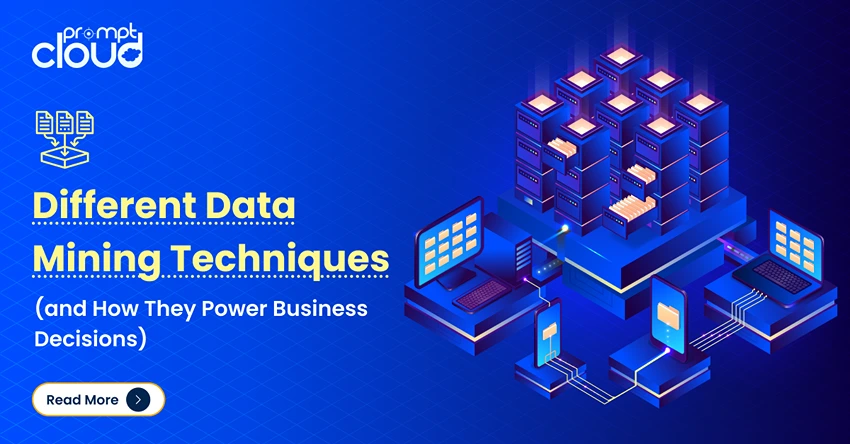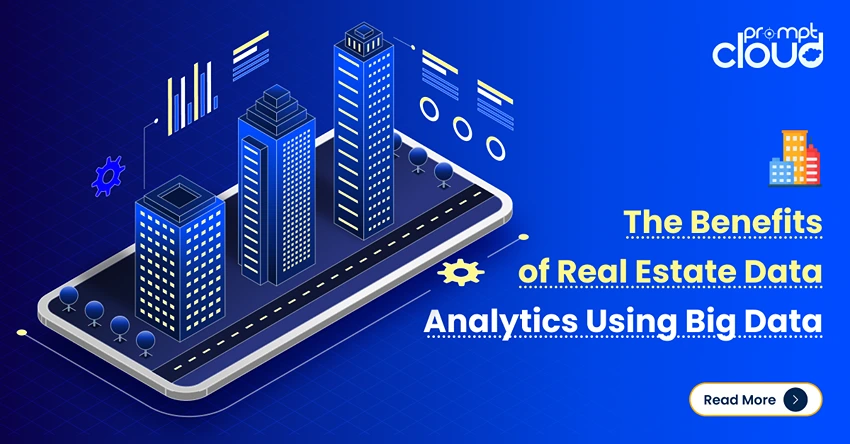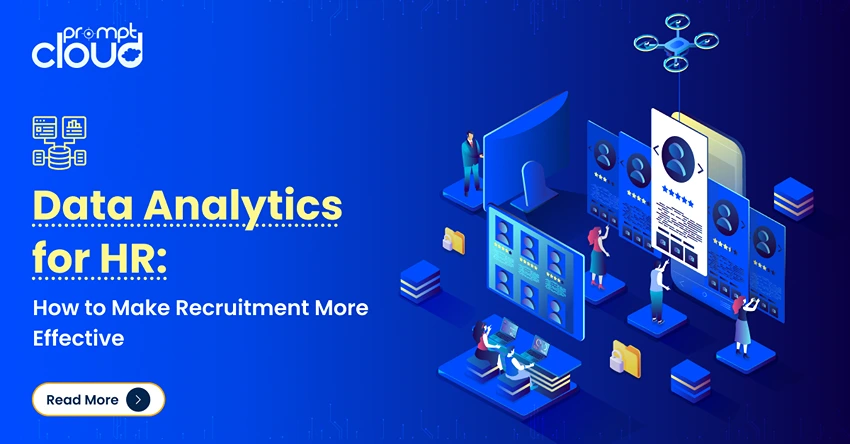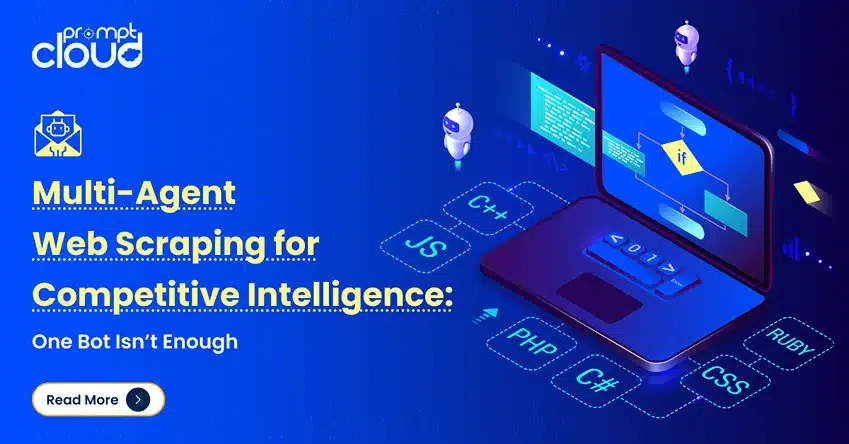
**TL;DR**
Dynamic pricing strategy allows businesses to adjust prices in real time based on demand, competition, seasonality, and other data signals. When executed ethically and backed by the right data infrastructure, it improves profitability, inventory turnover, and market responsiveness. However, poor implementation can damage customer trust and violate regulations. The key lies in balancing automation with transparency and customer fairness.
The New Era of Dynamic Pricing Strategy
Dynamic pricing is no longer a tactic reserved for airlines and eCommerce giants. It’s now central to every data-driven business that wants to react to live market shifts. From fashion retailers adjusting discounts hourly to SaaS companies experimenting with usage-based billing, dynamic pricing strategy has become a core component of pricing intelligence.
At its heart, a dynamic pricing strategy uses algorithms to adjust product or service prices automatically, based on demand, competition, seasonality, and external factors. But the game has changed — what once relied on manual inputs now depends on machine learning, web data feeds, and predictive analytics.
According to a McKinsey report on data-driven pricing (2025), companies that embed algorithmic pricing systems into their workflows see revenue lifts of 3–8% and margin improvements up to 20%. These numbers make one thing clear: static pricing is quickly becoming obsolete.
What Dynamic Pricing Really Means Today
Dynamic pricing strategy is about agility setting prices that reflect the market’s real-time pulse. Businesses apply it to increase profitability, attract new customers, or manage inventory more effectively.
A dynamic pricing engine relies on three layers of input:
- Internal data – sales velocity, conversion rates, and historical pricing trends.
- External data – competitor pricing, macroeconomic signals, and customer demand shifts.
- Contextual data – events, seasonality, location, or even weather patterns.
When combined, these data layers help businesses react dynamically to change. For instance, a travel aggregator might raise flight prices during peak season, while a retailer discounts slow-moving inventory automatically.
But a well-designed dynamic pricing strategy isn’t just about changing numbers it’s about maintaining fairness, brand perception, and customer trust while staying competitive.
The Main Types of Dynamic Pricing Strategies
Dynamic pricing can take many shapes depending on industry context and data maturity. Below are some of the most common frameworks:
| Type | How It Works | Best For | Example |
| Time-Based Pricing | Adjusts prices depending on time of day, week, or season. | Airlines, food delivery, and ride-sharing platforms. | Uber’s surge pricing during peak commute hours. |
| Demand-Based Pricing | Raises or lowers prices in response to consumer demand. | eCommerce, hospitality, and entertainment. | Amazon discounting slower-selling products. |
| Peak Pricing | Higher prices during peak usage periods. | Utilities, telecom, and fitness centers. | Gyms charging more for evening slots. |
| Penetration Pricing | Starts below market rate to attract customers, then gradually increases. | SaaS, subscription services, and new entrants. | Streaming platforms offering launch discounts. |
| Geo-Based Pricing | Adjusts prices based on location or local buying power. | Retail, travel, and logistics. | Hotels charge more in major cities than in smaller towns. |
Each model aligns with different business goals. The most successful implementations combine multiple types; for example, eCommerce sites often merge demand-based and time-based models to match conversion windows.
PromptCloud offers managed web scraping services tailored for e-commerce brands, delivering clean, ready-to-use data feeds that plug directly into your recommendation engine, pricing system or analytics stack.
The Benefits of a Dynamic Pricing Strategy
1. Real-Time Profit Optimization
Dynamic pricing helps businesses maximize margins without leaving money on the table. When prices automatically adapt to demand surges, businesses can earn more per transaction — and when demand dips, dynamic markdowns help maintain volume.
2. Improved Inventory Flow
Dynamic pricing bridges the gap between demand forecasting and supply management. By lowering prices on slow-moving stock and increasing them when availability drops, companies reduce overstock risks and prevent stockouts.
3. Data-Driven Decision Making
With continuous pricing experimentation, companies get insights into customer elasticity — how sensitive buyers are to price changes. This creates a feedback loop where data directly informs pricing policy.
4. Competitive Positioning
Businesses using dynamic pricing can respond instantly to competitor changes, ensuring they remain visible in price-sensitive markets. This responsiveness is why large retailers like Walmart and Amazon deploy algorithms that adjust prices millions of times daily.
5. Customer Segmentation and Personalization
Modern pricing systems allow for micro-segmentation. A retailer might offer discounts only to first-time users, while a B2B software provider dynamically adjusts based on contract length or user volume.
The Challenges of Dynamic Pricing Strategy
While the upside is enormous, the risks of misuse are equally significant.
1. Customer Perception and Fairness
If not handled transparently, customers may perceive dynamic pricing as exploitative. Price fluctuations without context can create resentment, especially if loyal customers pay more than new ones.
2. Data Dependency and Complexity
A successful dynamic pricing strategy relies heavily on real-time, high-quality data. Incomplete or noisy datasets can result in incorrect price signals that hurt margins instead of helping them.
3. Technology Investment
Dynamic pricing requires robust technology — from API integrations to machine learning models and competitor data feeds. For small businesses, this can be an expensive setup.
4. Regulatory Oversight
Many regions have laws against price gouging and discriminatory pricing. Failing to align your algorithms with compliance frameworks can lead to hefty penalties or reputation loss.
5. Brand Trust
Dynamic pricing needs to coexist with brand perception. A high-end brand might lose its luxury appeal if customers notice volatile pricing across touchpoints.
Data as the Engine Behind Dynamic Pricing
Dynamic pricing runs on data. The broader and cleaner your data feeds, the smarter your pricing engine becomes. Web scraping plays a critical role here — continuously collecting real-time market signals.
At PromptCloud, we’ve seen clients use structured data feeds to monitor competitor price changes, analyze product availability, and detect promotional patterns. This data doesn’t just help you set prices — it validates them.
Ethical and Regulatory Aspects of Dynamic Pricing
Ethical pricing isn’t just about compliance; it’s about perception. Customers don’t mind dynamic pricing when it’s fair — for instance, airline tickets or Uber rides — but they do when it feels manipulative.
To maintain balance:
- Be transparent: Display “prices may vary based on demand” notices.
- Avoid discriminatory pricing: Never use personal or demographic data to decide pricing tiers.
- Monitor compliance regularly: Regulations such as the EU’s Digital Markets Act (DMA) and state-level anti-gouging laws are evolving fast.
- Test for fairness: Run periodic audits on your pricing algorithms to ensure equitable outcomes.
A 2025 Deloitte study on AI ethics noted that over 70% of consumers expect companies to disclose if prices are algorithmically adjusted. That transparency directly impacts brand loyalty and purchase intent.
Building an Effective Dynamic Pricing Framework
Here’s a structured approach to designing a scalable dynamic pricing model:
1. Collect Clean Data
Start by gathering historical and real-time market data. Include sales patterns, demand spikes, and competitor listings.
2. Choose the Right Algorithm
Pick models based on your goals — rule-based for control, regression or reinforcement learning for adaptability.
3. Define Boundaries
Set upper and lower price limits to avoid extremes that damage trust or break regulations.
4. Monitor KPIs Continuously
Track metrics like revenue per visitor, margin per SKU, and customer churn to measure effectiveness.
5. Integrate Feedback Loops
Feed insights from campaigns back into your pricing engine to refine elasticity curves over time.
The Future of Dynamic Pricing
Dynamic pricing is entering its “autonomous” phase. AI-driven models are moving from reactive adjustments to predictive pricing, where systems anticipate demand changes before they happen.
Emerging trends include:
- AI-driven elasticity prediction for hyper-local pricing.
- Integration with edge analytics for IoT-powered retail (like smart shelves).
- Context-aware pricing, adjusting in real time for social sentiment, weather, or events.
According to a Gartner 2025 analysis, over 65% of retailers and travel companies are expected to use AI-based dynamic pricing models by 2026 — a clear indicator that pricing agility will define tomorrow’s market leaders.
Static vs Dynamic Pricing: A Practical Comparison
Dynamic pricing isn’t the only model in play. Many businesses still rely on static pricing, especially in industries where stability or regulation matters. Here’s a comparison of both approaches to highlight when dynamic pricing truly wins.
| Criteria | Static Pricing | Dynamic Pricing |
| Definition | Fixed prices remain constant regardless of demand. | Prices fluctuate based on demand, supply, and competition. |
| Implementation Ease | Simple to set and maintain. | Requires data pipelines, analytics, and automation systems. |
| Revenue Potential | Predictable but limited. | High, since prices adjust to maximize margin and conversion. |
| Customer Perception | Stable and transparent. | Risk of perceived unfairness if not explained properly. |
| Data Dependence | Low; uses historical or manual inputs. | High; requires real-time external and internal data feeds. |
| Adaptability | Poor — can’t respond quickly to market shifts. | Excellent — reacts instantly to changes. |
| Suitability | Ideal for regulated industries or low-variability markets. | Best for fast-moving, competitive markets. |
While static pricing offers predictability, dynamic pricing gives agility and in data-rich markets, agility usually wins. PromptCloud often helps brands transition from static spreadsheets to dynamic, data-fed systems where prices update in real time through APIs and automation rules.
How Data Infrastructure Shapes Dynamic Pricing Strategy
Most companies underestimate how much infrastructure lies beneath a successful pricing engine. A working dynamic pricing strategy isn’t just a dashboard — it’s a pipeline that continuously ingests, cleans, and analyzes data.
Here’s what a scalable setup looks like:
1. Data Collection Layer
Real-time feeds pull data from multiple sources: competitor websites, marketplaces, and review portals. Web scraping is vital here. PromptCloud provides structured data APIs that power this exact layer, helping clients gather consistent pricing signals daily or hourly.
2. Data Processing and Normalization
Collected data must be standardized across product IDs, currencies, and time zones. Without this step, algorithms can’t make accurate decisions. Tools like Spark or Snowflake often handle these transformations.
3. Analytical Models
Once data is normalized, machine learning models analyze demand elasticity, competitor movement, and seasonality. Predictive models anticipate when price shifts are likely to produce the best ROI.
4. Pricing Engine & Rules Layer
Algorithms or rule-based systems determine price actions. Businesses can set boundaries (e.g., “never drop below cost price” or “match competitor +5% margin”).
5. Execution Layer
This layer pushes updates across all channels website, app, POS systems, and distributor portals — through APIs, ensuring real-time synchronization.
6. Feedback Loop
Every adjustment is logged and analyzed. If conversions drop, the model refines itself. This loop is what makes the system intelligent over time.
This framework data ingestion, model execution, and feedback is exactly what separates an experimental pilot from a sustainable pricing system.
Dynamic Pricing Across Industries: Real-World Examples
1. Airlines and Travel
The most classic example of dynamic pricing. Airlines adjust fares by hour using algorithms that weigh seat occupancy, booking time, and competitor fares. A 2024 Skyscanner study noted that major airlines change flight prices up to 17 times a day.
2. eCommerce and Retail
Amazon pioneered algorithmic repricing. Their system checks competitors every few minutes, adjusting over 2 million SKUs automatically. Smaller retailers now replicate this model using data APIs or managed scraping solutions from providers like PromptCloud.
3. Ride-Sharing and Mobility
Uber’s surge pricing uses supply-demand ratios to calculate multipliers. When requests exceed driver availability, prices increase automatically to rebalance the network — a textbook example of market equilibrium.
4. Streaming Platforms
Some streaming services are experimenting with engagement-based pricing — adjusting rates based on user activity or region. Spotify, for instance, tests dynamic pricing for premium plans based on local currency strength and ARPU benchmarks.
5. Energy and Utilities
Electricity suppliers use dynamic tariffs to balance grid demand. Users can save costs by shifting consumption to off-peak hours, promoting efficiency while reducing strain during high demand.
6. Event Ticketing
Concerts, sports events, and cinemas use variable pricing to fill seats strategically. Early buyers pay less, while last-minute buyers face premium rates — increasing occupancy and yield.
These examples demonstrate that the essence of dynamic pricing remains universal: use data to balance demand, availability, and perceived value.
Building Customer Trust in a Dynamic Pricing World
The success of a dynamic pricing strategy depends on perception management. The algorithm might be perfect, but if users think they’re being manipulated, you lose credibility.
Here’s how brands can maintain trust:
- Explain the “why”: Transparency builds tolerance. A small banner noting “Prices vary based on demand” makes a big difference.
- Reward loyalty: Offer stable pricing tiers or loyalty discounts to existing customers even when public prices fluctuate.
- Cap volatility: Avoid extreme swings stable ranges (like 5–15%) keep customers comfortable.
- Monitor feedback loops: Sentiment analysis tools can detect negative reactions in real time. If “pricing unfair” spikes in reviews, algorithms may need tuning.
PromptCloud’s clients often use review and sentiment scraping to gauge whether dynamic price shifts are affecting brand sentiment merging pricing data with voice-of-customer insights.
PromptCloud’s Take: Why Web Data Is the Backbone of Dynamic Pricing
Dynamic pricing without external web data is like flying blind. Internal analytics show what customers did yesterday; web data shows what competitors are doing today.
Here’s how PromptCloud fits into that ecosystem:
- Competitor Price Feeds: Daily or hourly data pipelines that capture product listings, price movements, and promo tags across eCommerce sites.
- Availability Tracking: Detects when competitors go out of stock, letting you raise prices strategically.
- Geo and Channel Variants: Regional crawlers track price discrepancies across markets and marketplaces.
- Historical Benchmarking: Stored datasets help you measure how competitor strategies evolved seasonally or by event.
Together, these capabilities form a pricing observability layer — the foundation for reliable dynamic pricing. Clients can plug these feeds into custom dashboards or APIs that directly inform their pricing engines.
By integrating web data, brands don’t just react faster; they predict better.
Advanced Dynamic Pricing Use Cases Emerging in 2025
Dynamic pricing is evolving beyond “price matching” into predictive and contextual use cases.
1. Weather-Driven Pricing
Retailers are linking meteorological data with buying behavior. Umbrella prices spike before rain forecasts; sunscreen discounts roll out ahead of heatwaves. AI-driven weather elasticity models are now standard in FMCG.
2. Sentiment-Aware Pricing
Social listening tools feed customer mood data into pricing models. If sentiment drops during a campaign, prices stabilize or drop automatically to rebuild goodwill.
3. AI-Powered Auction Pricing
Some marketplaces now run real-time price auctions. Algorithms bid dynamically for user attention, optimizing ad budgets alongside product pricing.
4. Predictive Subscription Pricing
SaaS firms are testing predictive renewal pricing — lowering or raising subscription rates based on churn probability scores, driving retention without blanket discounts.
5. Cross-Industry Data Fusion
The next frontier is connecting unrelated data streams. For instance, mobility data from smart cities could influence retail pricing nearby (think surge pricing at restaurants near crowded events).
Each trend depends on one thing: clean, real-time data pipelines. And that’s where PromptCloud’s role as a managed web data provider becomes critical.
Common Pitfalls and How to Avoid Them
Even well-funded pricing programs fail without alignment across teams. Here are the usual mistakes:
- Ignoring operational readiness: The tech might be in place, but customer service, marketing, and finance teams must be aligned on pricing variability.
- Overfitting models: Algorithms that react too aggressively to small data changes can cause chaotic price swings.
- Neglecting audit trails: Every price change should have traceable logic. Missing audit data can break compliance.
- Failing to test fairness: Ethical AI frameworks now recommend fairness testing for pricing algorithms, especially when personalized data is used.
- Overcomplicating rollout: Pilot with one category or region first. Success comes from iteration, not instant full-scale deployment.
The Strategic Future: From Dynamic Pricing to Autonomous Commerce
Dynamic pricing is just the start of an even bigger shift into autonomous commerce. In this next phase, algorithms won’t just react to market changes; they’ll negotiate, forecast, and self-correct without human input.
According to a 2025 Accenture report on algorithmic commerce, over 45% of digital-native brands are developing self-optimizing pricing systems that sync with inventory, logistics, and advertising data. These systems create a fully closed feedback loop, pricing no longer sits in isolation but becomes the “brain” of the business.
Dynamic pricing will soon merge with real-time personalization and AI-driven recommendation systems, turning every transaction into a micro-optimized event.
If You Want to Read More About Data-Led Pricing
If you’d like to understand how web data enables smarter pricing models, read our blogs:
- Beyond Robots.txt: Navigating Modern Crawl Controls
- Event-Triggered Price Monitoring
- Instant Data Scraper Comparison – Build vs Buy
- Image Scraping for eCommerce AI
Each dives deeper into the data infrastructure behind pricing intelligence.
PromptCloud offers managed web scraping services tailored for e-commerce brands, delivering clean, ready-to-use data feeds that plug directly into your recommendation engine, pricing system or analytics stack.
Conclusion
Dynamic pricing strategy isn’t about charging more, it’s about charging smarter. It allows businesses to balance demand, margin, and customer satisfaction through data-backed decisions. With tools like PromptCloud feeding clean, structured market intelligence into your pricing models, your business can evolve from reactive adjustments to predictive precision. Dynamic pricing done right doesn’t just optimize revenue it builds resilience in a market that never stops changing.
FAQs
A dynamic pricing strategy adjusts prices based on current market demand, competitor pricing, and other variables. For example, airlines increase ticket prices as seat availability drops closer to departure.
Common industries include eCommerce, hospitality, travel, logistics, SaaS, and retail. Recently, it’s also being adopted in sports, healthcare, and utilities.
It depends on execution. Transparent communication and ethical boundaries make it acceptable. The key is to avoid manipulation or discrimination.
Smaller businesses can use simplified rule-based pricing engines, adjusting based on inventory levels or competitor prices fetched via APIs or scraping tools.
Web scraping gathers real-time data on competitor listings, availability, and trends — the raw material for dynamic pricing algorithms to make informed decisions.



















